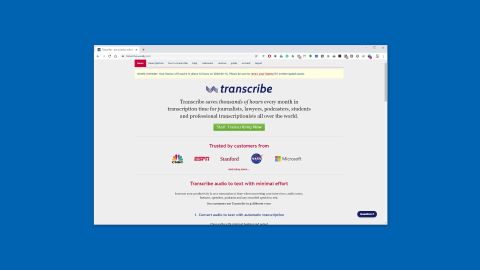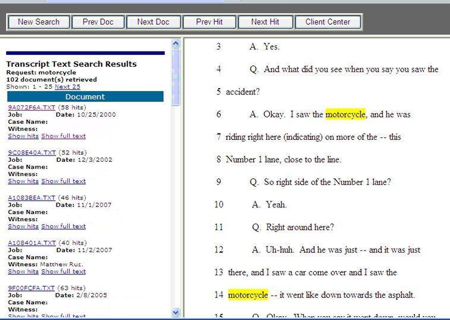

Wreally transcribe software#
This is also used in Transcribe to familiarize the software with the accent and voice of the user.

To train this STT AI, a human speaker reads a text into the AI via a microphone, and the AI analyzes the human voice and recognizes speech sounds which are then used to create a written text that corresponds to the phonation of the human speech. Normally, the SRS must undergo a process called enrollment, which is basically a training of the speech-to-text AI. However, if the STT-AI is only bundled with the media player, then it is described as a speech recognition system (SRS). If this STT AI is bundled with a media player and a text processor so that it can receive audio input via the media player, and then print out the output in the text processor, then it is called a transcription software. The STT AI is at the core of any speech recognition system (SRS) used by providers of online transcription services like WReally. This engine is also called computer speech recognition, automatic speech recognition, and speech-to-text (STT) AI. The speech recognition engine in Transcribe allows the software to listen to and recognize a spoken language, and then translate this speech to text. This means that Transcribe can be used in the film industry to create bilingual or multilingual closed captions for films.Īs mentioned above, speech recognition is critical in a transcription software like Transcribe, and as expected, it is contained in the software as an algorithm set that is weaved with a programmable instruction set. Therefore, the transcript can be used as the base for creating a closed caption for films to be shown an audience who do not speak the language used by the actors. If this subtitle includes text that interpretive descriptions of non-speech elements e.g yawns, then it is called a caption. Moreover, the transcript can be used to generate a subtitle that is included in the video so as to complement the visual information with displayed text that transcribes the video’s audio component. Voice recognition is the identification of the speaker, not what he or she is saying (the speech), while speech recognition is the identification of the speech (not the speaker).Īs expected, voice recognition is useful in a security system that can use the voice of the speaker to authenticate/verify his or her identity while speech recognition is useful in transcription services that transcribe speech into human-readable text, the transcript.Īs compared to the audio recording, this transcript is searchable and is much smaller in size, for example (e.g) the transcript can be 57 kilobytes (kB) for a 2-hour long audio recording that is 256 megabytes (MB) in size. In other words, voice recognition differs from speech recognition. These 2 qualities are important for voice recognition and speech recognition AI.Įven though speech and voice recognition can seem similar, they are not, and they differ fundamentally in their operation and utility.

What one needs to understand is that the sound produced in the laryngeal cavity does produce resonances in the vocal tract which gives rise to a formant (which will be explained later) which can differentiate the sound made by one person from a sound made by another person.Īlso, each sound is characterized by its unique set of loudness (or sound intensity) and pitch (frequency). If this voice is produced by moving the cords closer together so as to reduce the glottis, then it is called a glottal sound, while if the sound is produced by enlarging the glottis by moving the cords away from each other, then it is called a voiceless glottal fricative sound. To be more specific, the vibration of these cords produces a sound that is interpreted by the human ear as voice. The glottis is the space formed between these cords and is thus a non-physical part of the voice tract. Physiologically, the sound is produced in the laryngeal cavity when air passes through the glottis and vibrates the vocal cords. The vocal tract is formed by the oral cavity (bounded by the mouth, tongue, upper palate, and teeth), nasal cavity, laryngeal cavity, and pharynx. Sound is produced in the vocal tract, which is the cavity in the head and neck that allows for phonation to occur. Sound, Voice, Speech, and Voice-and-Speech Recognition Software Speech Recognition System and the Transcription Software.Sound, Voice, Speech, and Voice-and-Speech Recognition Software.


 0 kommentar(er)
0 kommentar(er)
